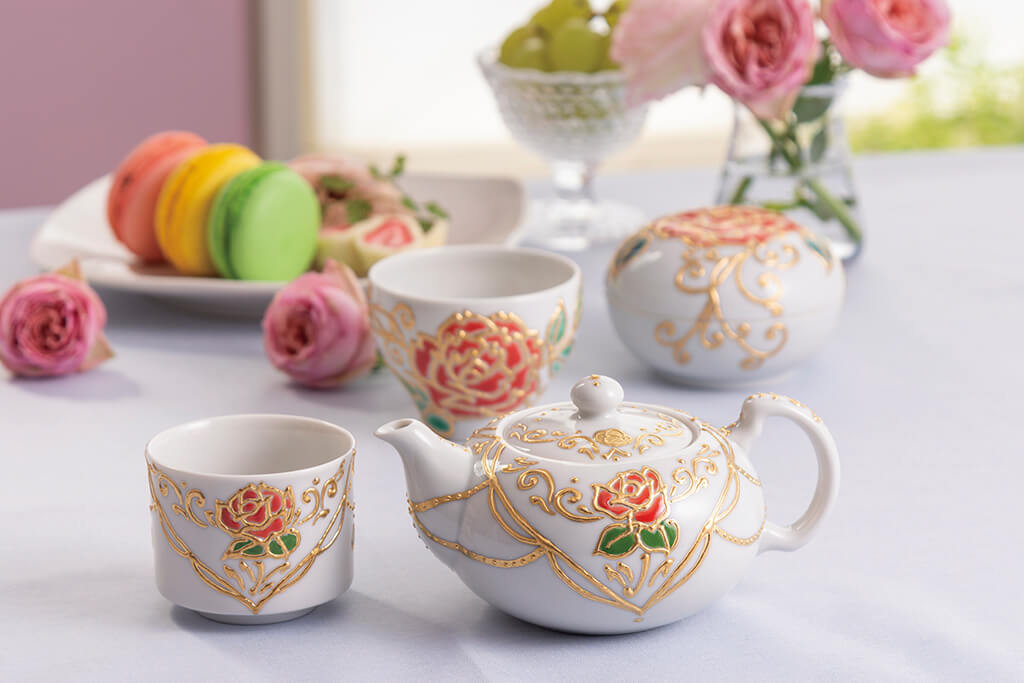Kutani ware is a type of pottery known as iroe ceramics. In other words, some Kutani ware is painted on porcelain, and some Kutani ware is painted on ceramic. The difference between porcelain and ceramics is the raw material. Even within the same Kutani ware, the finish of porcelain and ceramics are very different, as are the feel and the overglaze painting.
Porcelain
The main ingredient of porcelain is stones such as potter's stone. For this reason, porcelain is also called “stoneware.
The surface of porcelain is smooth to the touch, like glass. It is white in color. The white color of porcelain allows painted or gilded decoration to stand out.
When lightly tapped, it makes a high metallic sound.

